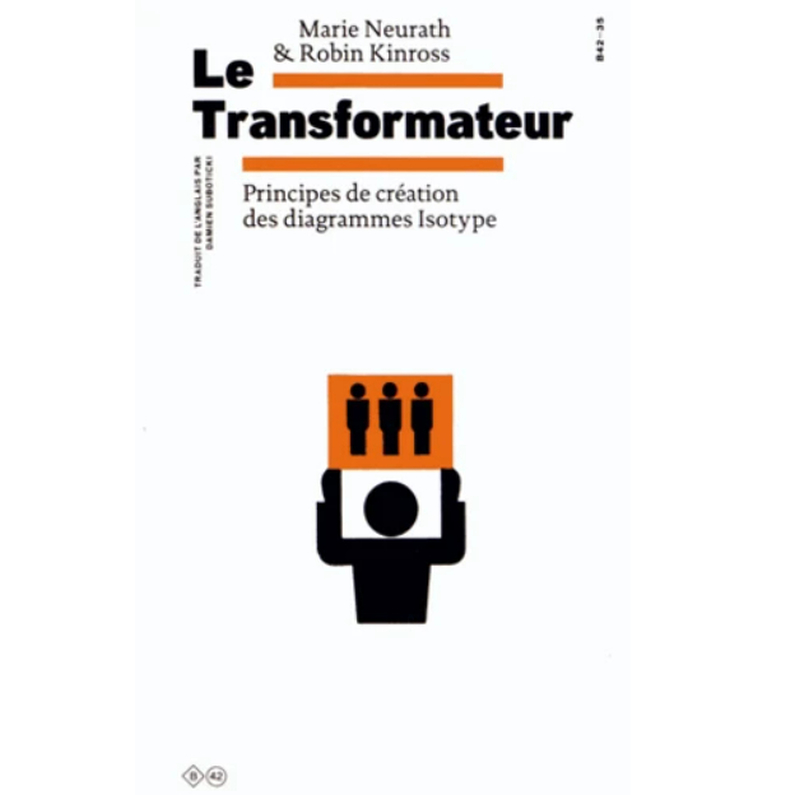Characteristics
- Number of pages
- 133
- Dimensions
- 13,2 cm × 20,8 cm × 1,2 cm
- Categories
- Bookshop, Graphic design and ads, Exhibition, Exhibition - Années 80. Mode design et graphisme en France
Description
The visual work of Otto Neurath and his associates, a simple, universal, non-verbal language now known as Isotype, has been at the center of much debate in recent years. The Transformer is a condensed presentation of the fundamental principles on which it is based: the work of "transformation", or how to give information a visual form. This deeper dimension of their work - which can be applied to all areas of design - is nowadays systematically neglected on the simple assumption that Isotype is only about rows of pictograms.
At the heart of this book is an unpublished text by Marie Neurath, the main transformer of Isotype, written during what was the last year of her life. This is supplemented by a series of comments by Robin Kinross on illustrated examples of Isotype work, as well as other short supplementary texts." From the data provided in words and numbers, a way must be found to extract the essential facts and transcribe them into image form.
It is the responsibility of the "transformer" to understand this data, to obtain all the necessary information from the expert, to determine what to convey to the audience, how to make it understandable, how to relate it to the general culture or to the information already given in other diagrams. In this sense, the transformer is the curator of the audience.
"Marie Neurath Otto Neurath's work has been the subject of numerous books and articles in English, but there is hardly any text that reports or analyzes the contributions of his research in the fields of design. Indeed, the influence of his creations is still undeniable today. Many teachers and research groups in art and design schools and universities use Neurath's work as a tool. This book will be the first, in French, to present these creations and the context of their development, thanks to the testimony of Marie Neurath and the iconographic material gathered by Robin Kinross.

